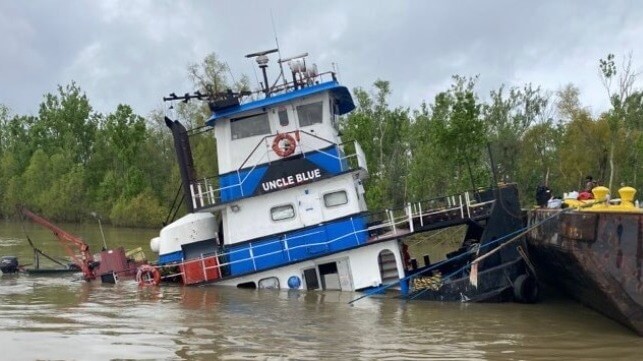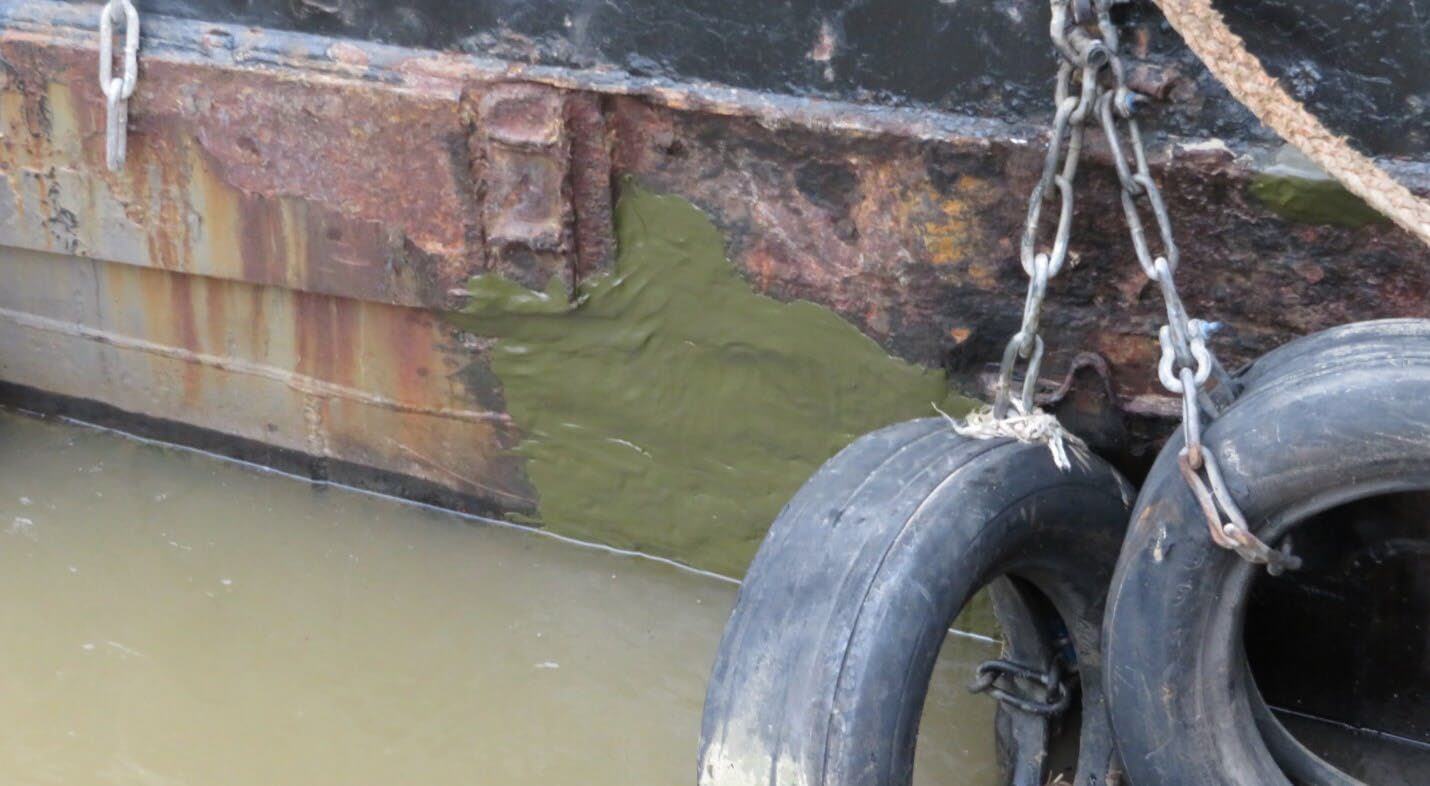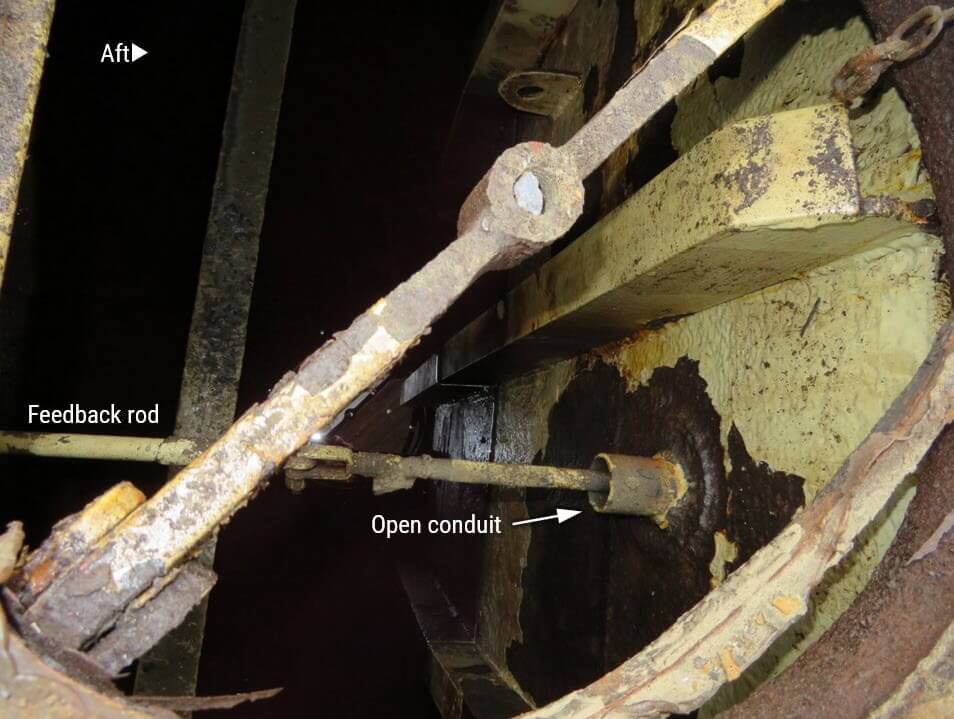NTSB: Sub-M Towboat Sank From Severe Hull Corrosion

The NTSB has concluded that severe corrosion caused the sinking of an aging towboat on the Mississippi in 2023, the latest in a series of casualty reports linked to poor material condition. Though the vessel's hull was badly corroded, a licensed third party organization had issued it a Subchapter M certificate of inspection about two years before the casualty.
The towboat Uncle Blue was built in 1964, and operated on the Lower Mississippi. On March 25, 2023, Uncle Blue was pushing an empty deck barge from Harvey, Louisiana to Baton Rouge. At about 0200 hours on the morning of the 26th, the vessel was operating near the Sunshine Bridge. The steersman made a round of the engine room and found nothing wrong. At about 0330, as the towboat neared Eightyone Mile Point, the captain noticed that the vessel was listing slightly to port. He attributed this to the arrangement of the barge tow with the push knees and took no further action.
After rounding the point, the Uncle Blue took on a starboard list. The crew loosened the face wires (securing the barge to the towboat), and the Uncle Blue rolled to port. At this point, the engine room's sole bilge alarm sounded and water flooded up over the back deck.
A crewmember checked the engine room and found flooding, and the master sounded the general alarm to rouse the crew. He radioed nearby traffic for help, and the good Samaritan towing vessel CSS Richmond responded. Richmond pushed Uncle Blue up against the right descending bank of the river, taking the towboat out of deeper water and limiting potential damage.
CSS Richmond provided salvage pumps so that Uncle Blue's crew could attempt to dewater their engine room. The effort was unsuccessful, and the crew abandoned ship onto their barge tow. Uncle Blue partially by the stern, coming to rest with her back deck and lower deckhouse immersed.
 Temporary epoxy patch over the multiple wastage holes in the hull. A preexisting doubler plate is visible to the left of the patch (NTSB)
Temporary epoxy patch over the multiple wastage holes in the hull. A preexisting doubler plate is visible to the left of the patch (NTSB)
Salvors removed the towboat's fuel and raised the wreck with a crane. NTSB inspectors were at the scene, and they quickly noticed that water was pouring out of holes in the hull in way of the lazarette. The area was patched with multiple doubler plates. To keep the vessel temporarily afloat, salvors made temporary hull repairs with epoxy.
A post-accident inspection found multiple holes from corrosion on the lazarette's port side, along with doubler plates installed to combat similar corrosion issues nearby. "Given the vessel's age, the holes found in the hull, and the presence of doubler plates, the vessel's hull had not been adequately maintained," NTSB concluded. As there were no other identified sources of potential flooding, the investigators determined that the wasted steel hull plating was the source of the leakage.

Courtesy NTSB
Investigators also looked inside the Uncle Blue's void spaces and found that a series of pipe runs between the compartments had corroded or were completely missing (above). Without the pipes, the vessel had open communication between the void spaces and nothing to stop progressive flooding. Water entering the lazarette would have flooded through the voids and into the engine room. Since the lazarette and the aft end of the engine room did not have bilge alarms, the first alarm sounded when water reached the forward end of the engine room - leaving little time for the crew to address the hazard.
NTSB advised owners to take basic steps to ensure the integrity of aging hulls, to include proper cropping and fitting of replacement plates - not doubler plates, which concentrate stress in nearby areas and are not ideal for permanent repairs.
No comments:
Post a Comment